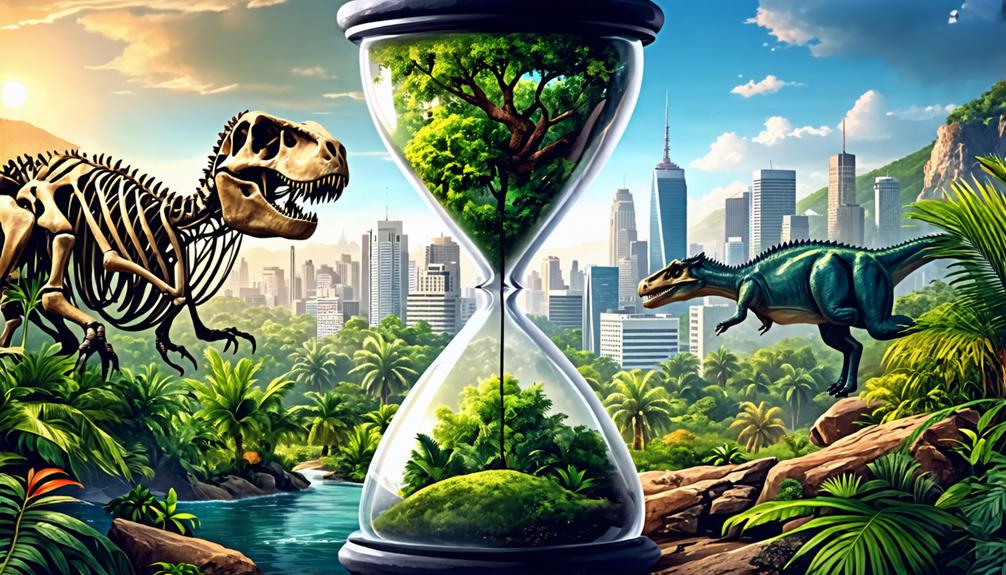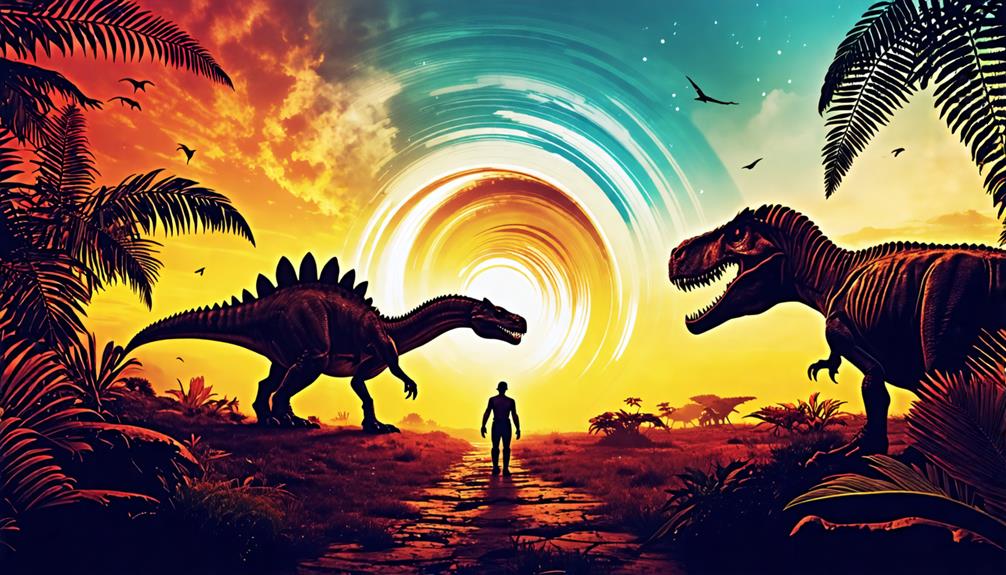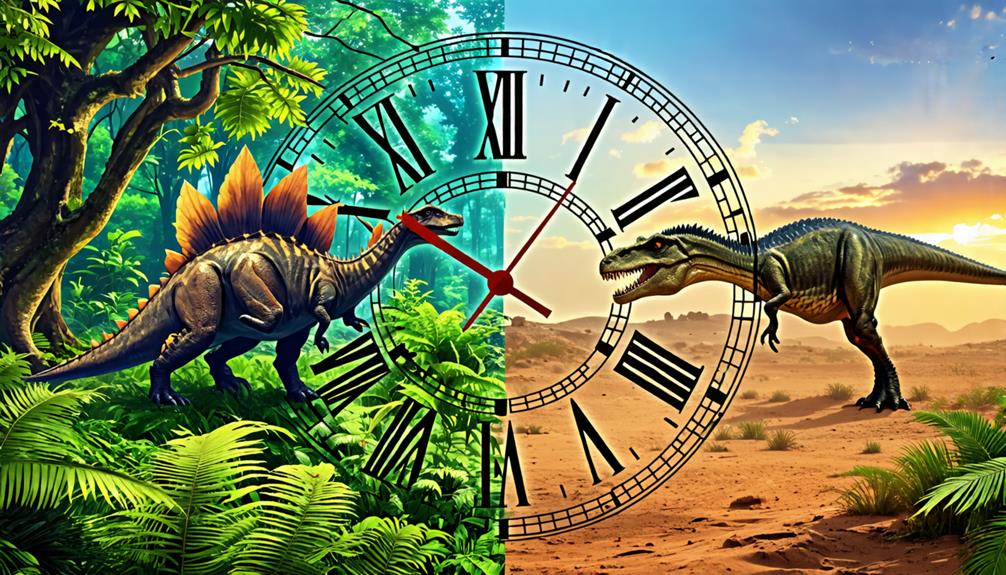You might think you know dinosaurs, but the true scope of their existence can be mind-boggling. When you picture prehistoric life, it's easy to lump all dinosaurs together, imagining T. rex and Stegosaurus roaming side by side. However, the reality is far more complex and surprising. The vast expanse of time separating these iconic species challenges our perceptions and offers a fresh perspective on Earth's history. As you consider the implications of this temporal divide, you'll find yourself questioning other assumptions about prehistoric life and wondering what other misconceptions might be shaping your view of the distant past.
Key Takeaways
- *Tyrannosaurus rex* lived 68 million years ago, while *Stegosaurus* existed 155-145 million years ago.
- An 80-million-year gap separates *T. rex* from *Stegosaurus*.
- Only 66 million years separate *T. rex* from modern humans.
- Humans are closer in time to *T. rex* than *T. rex* was to *Stegosaurus*.
Dinosaur Timeline Misconceptions

You might be surprised to learn that *Tyrannosaurus rex* lived closer in time to us than to *Stegosaurus*. This fact highlights common misconceptions about dinosaur timelines and coexistence.
While *T. rex* roamed the Earth during the late Cretaceous period, about 68 million years ago, *Stegosaurus* inhabited the late Jurassic period, 155-145 million years ago. That's an 80-million-year gap!
Popular media often portrays these dinosaurs together, leading to confusion about their actual timelines. In reality, *Allosaurus* was a contemporary of *Stegosaurus*, but had long since vanished by the time *T. rex* appeared.
Understanding these vast time differences is essential for grasping the complex evolutionary history of dinosaurs. Educational resources now emphasize these significant gaps to correct misconceptions and provide a more accurate picture of dinosaur existence throughout Earth's history.
Evolutionary Gaps and Species Separation
While popular media often portrays different dinosaur species coexisting, the reality of evolutionary gaps and species separation paints a vastly different picture.
You might be surprised to learn that Tyrannosaurus rex lived closer to modern humans than to Stegosaurus. In fact, about 80 million years of evolutionary history separate T. rex from Stegosaurus, while only 66 million years separate T. rex from humans.
This time separation emphasizes the vast species divergence that occurred across different geological periods.
Stegosaurus roamed the Earth during the late Jurassic, around 155-145 million years ago, while T. rex appeared in the late Cretaceous, about 68 million years ago.
The complex history of dinosaur evolution spans hundreds of millions of years, with various species thriving and facing extinction long before humans emerged on the timeline.
Deep Time Perspective

Grasping the concept of deep time often challenges our human perception of history and our place in it. When you consider the vast geological history of Earth, you'll realize that modern humans are mere newcomers. The Mesozoic Era, which included dinosaurs like Tyrannosaurus rex and Stegosaurus, lasted about 180 million years. In contrast, our species has only been around for 300,000 years.
To better understand deep time and our brief existence, consider these points:
- T. rex lived closer to us than to Stegosaurus.
- There's an 80 million year gap between T. rex and Stegosaurus.
- Only 66 million years separate humans from T. rex.
- Human evolution represents a tiny fraction of Earth's history.
This perspective highlights the immense timescales of evolution and extinction, emphasizing how recent our arrival is in the grand scheme of Earth's timeline.
Conclusion
You've just glimpsed the vastness of Earth's history. It's easy to lump all dinosaurs together, but they're spread across immense time scales.
Remember, you're closer in time to T. rex than it was to Stegosaurus. This perspective helps you appreciate evolution's slow march and the relatively recent emergence of humans.
Next time you think about dinosaurs, you'll have a clearer picture of their place in Earth's long story.

Leave a Reply